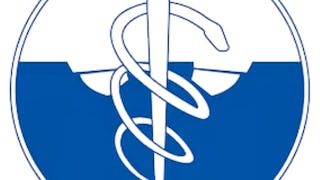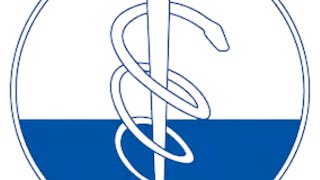Welcome to Trauma Emergencies and Care. In this course, you will learn about some of the mechanics and physics of trauma on the human body, and how this can cause injury. You will continue to expand your new vocabulary with medical terminology, and learn how to describe the different injuries you may see. You will also learn about the trauma system itself- and when it is important to transport patients to a trauma center.

Ends tomorrow: Get a Black Friday boost with $160 off 10,000+ programs. Save now.


Trauma Emergencies and Care
This course is part of Become an EMT Specialization



Instructors: Arthur Pliaconis
29,813 already enrolled
Included with
(485 reviews)
Skills you'll gain
Details to know

Add to your LinkedIn profile
5 assignments
See how employees at top companies are mastering in-demand skills

Build your subject-matter expertise
- Learn new concepts from industry experts
- Gain a foundational understanding of a subject or tool
- Develop job-relevant skills with hands-on projects
- Earn a shareable career certificate

There are 4 modules in this course
Are you ready to take on trauma? From the battlefield to highways, traumatic injuries were the catalyst for developing systems to move patients to places that they could receive more advanced care. In this module we will talk about what trauma is and why it deserves special attention when it comes to patient care.
What's included
9 videos8 readings2 assignments
In this module we will discuss the physiology of bleeding, and how hemorrhage, or excessive bleeding, leads to shock. We will review the CV system, and discuss about different types of blood loss, how it leads to shock, and then ultimately how to manage hemorrhagic shock before shock leads to death.
What's included
11 videos3 readings1 assignment
In this module we will discuss various soft tissue injuries, including burns. Before watching the videos in this module please review your anatomy, specifically of the skin. As we cover soft tissue injuries, you will note that there are varying degrees of injury that can occur with trauma, and many of the classifications have to do with how deep or how much damage is done, and in what way, to the skin and blood vessels.
What's included
12 videos3 readings1 assignment
We will cover trauma isolating different parts of the body and what injuries you should consider in these particular areas. Having an understanding of what injuries may be present can help you determine where you patient may need to go, and how quickly you need to get them there. It will be helpful for each of these videos to review the pertinent anatomy associated with the body system we are discussing.
What's included
10 videos3 readings1 assignment
Earn a career certificate
Add this credential to your LinkedIn profile, resume, or CV. Share it on social media and in your performance review.
Instructors

Offered by
Explore more from Patient Care
 Status: Free Trial
Status: Free TrialUniversity of Colorado System
 Status: Free Trial
Status: Free TrialUniversity of Colorado System
 Status: Free Trial
Status: Free TrialUniversity of Colorado System
 Status: Free Trial
Status: Free TrialUniversity of Colorado System
Why people choose Coursera for their career




Learner reviews
485 reviews
- 5 stars
85.36%
- 4 stars
11.95%
- 3 stars
1.85%
- 2 stars
0.20%
- 1 star
0.61%
Showing 3 of 485
Reviewed on Feb 9, 2020
Being an emergency nurse, I found trauma emergency course is highly effective and useful for me. Thanks!
Reviewed on Jan 21, 2021
Thank you all, for your dedicated time and efforts that was put into the courses
Reviewed on Oct 2, 2020
Thank you so much university of Colorado system and coursera.this course was really helpful

Open new doors with Coursera Plus
Unlimited access to 10,000+ world-class courses, hands-on projects, and job-ready certificate programs - all included in your subscription
Advance your career with an online degree
Earn a degree from world-class universities - 100% online
Join over 3,400 global companies that choose Coursera for Business
Upskill your employees to excel in the digital economy
Frequently asked questions
IMPORTANT NOTICE: Current “Become an EMT” Specialization No Longer NREMT Eligible
Effective immediately, the current version of the “Become an EMT” specialization does NOT meet the National Registry of Emergency Medical Technicians (NREMT) certification requirements and cannot be used to qualify for NREMT examination.
Why This Change?
The current specialization no longer aligns with the new certification standards implemented by the NREMT in 2024. While the existing “Become an EMT” specialization remains valuable for those interested in learning about emergency medical services, it cannot be used for NREMT certification purposes.
New NREMT-Eligible Course Coming Spring 2026
A completely updated “Become an EMT” specialization that will meet all current NREMT requirements will be available on Coursera in spring 2026.
Requirements for NREMT Certification with New Course:
1. Successful completion of the online course content
AND
2. Successful completion of a hands-on skills course from a recognized EMT training center
Both components must be completed to be eligible for the NREMT examination and certification.
Currently Enrolled Learners
If you are currently enrolled in the “Become an EMT” specialization and need NREMT certification we suggest pausing your participation until the new specialization launches in spring 2026. What you have learned will help you through the new course more quickly and easily. However, partial completion of the existing course will not translate to partial completion of the new course.
Send questions to: uchmedic@uchealth.org.
Prospective Learners
If you are considering enrollment in the “Become an EMT” specialization:
• The current version of the specialization is notsuitable for NREMT certification
• The recommendation is to wait for the new NREMT-eligible version launching in spring 2026
The current course is valuable for:
• General EMS education and knowledge
• Career exploration in emergency medical services
• Continuing education for current healthcare professionals
Send questions to:uchmedic@uchealth.org.
To access the course materials, assignments and to earn a Certificate, you will need to purchase the Certificate experience when you enroll in a course. You can try a Free Trial instead, or apply for Financial Aid. The course may offer 'Full Course, No Certificate' instead. This option lets you see all course materials, submit required assessments, and get a final grade. This also means that you will not be able to purchase a Certificate experience.
When you enroll in the course, you get access to all of the courses in the Specialization, and you earn a certificate when you complete the work. Your electronic Certificate will be added to your Accomplishments page - from there, you can print your Certificate or add it to your LinkedIn profile.
More questions
Financial aid available,


